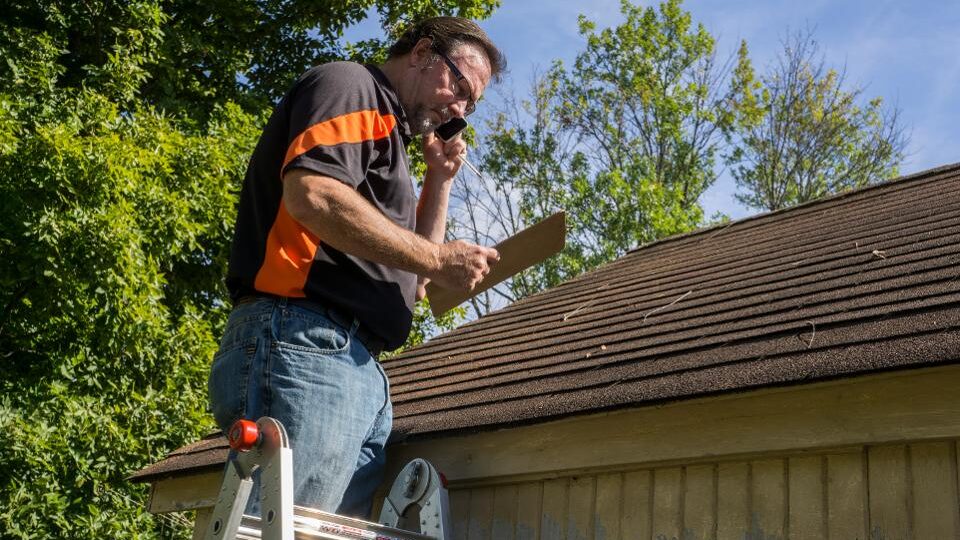Neglected roof damage are a few of the most expensive mistakes a homeowner can make. However they are in the same way easily preventable.
Listed below are 6 tricks for avoiding harm to your roof and addressing small issues before they become big problems.
1. Regularly inspect your roof.
Every year, before and after winter/storm season, it’s important to thoroughly test your roof. In the event that you aren’t more comfortable with getting on your roof, call a specialist who gets the experience and equipment to inspect your roof meticulously and safely.
If you opt to do-it-yourself, look for sagging, damaged or missing shingles, algae growth, insect/animal activity and leaking light or liquid in your attic. Many of these are warning flag for immediate repair by you or a specialist.
2. Clean your gutters.
*Collective groan* No-one wants to do clean their gutters. It’s frustrating, messy and involves being on the ladder. But allowing your roof to properly dispel water prevents greater issues like water saturation and leaks that lead to rotting wood and the introduction of mold.
While you’re up there, be sure the fascia (the board that your gutter is mounted on) hasn’t been damaged by water, wind, insects or animals. It’s a fairly easy method for water to creep into the home.
3. Trim your trees.
Some limbs can get too close for comfort. If part of your tree is nearly touching or resting on your roof, that’s cause for major concern. During storms, limbs can swing several feet or fall due to high winds. In the event that you don’t wrap up with a hole in your roof, you’ll probably lose a few shingles.
Trimming your trees also discourages animals from engaging in chimneys, wall, vents, etc.
4. Clear snow.
A light to medium layer of snow can make your home appear to be a winter wonderland. But a foot or even more of heavy, packed snow can cause your roof to collapse. Monitor the state of your roof after much snowfall.
If the quantity of snow is concerning, use a roof rake to eliminate it before it gets the chance to set-up any major issues.
5. Remove debris.
Though they could seem to be insignificant, leaves, sticks and small limbs, can trap water, encourage algae growth and damage shingles. Utilizing a roof rake or telescoping pole to eliminate them is a straightforward solution.
The first rung on the ladder is to verify you have roof damage. If you realise the damage yourself, take pictures from it with your smartphone or camera. There could be several damaged area, so take pictures of most of these. You’ll need to provide these pictures to your insurance provider when you file your claim.
But first, contact Merkury Public Adjusters and recruit them to research the damage and help you process your claim. Insurance firms often deal with roof damage claims. They learn how to find loopholes in plans to allow them to avoid spending roof damage claims, particularly if they’re worth a lot of money.
6. Inspect and repair seals, joints, and flashing.
Seals, joints, and flashing are the most frequent places for leaks. Dried or loose sealant and punctures are signs of vulnerability. Don’t ignore them.
Extending the life span of your roof boils down to taking immediate action once you identify a challenge. Monitor your gutters, trees, snow, and debris and you’ll have prevented a slew of issues.
